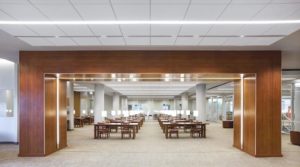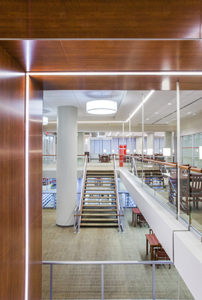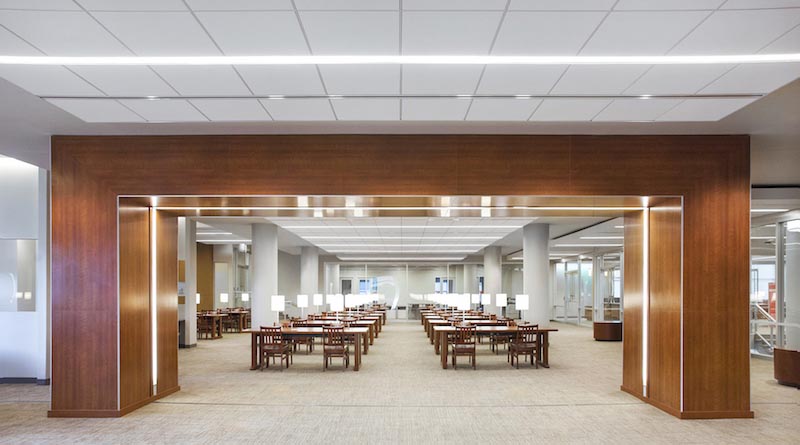LaGuardia Community College Expands Library Space
NEW YORK — LaGuardia Community College, part of the City University of New York (CUNY), debuted a 21,000-square-foot expansion of its library in May. Gruzen Samton served as the architect; Stalco Construction served as the general contractor; and AECOM, served as the general manager — all three of which have offices in New York.

The community college currently educates more than 50,000 New Yorkers through degree, certificate and continuing education programs, and the library is the most heavily used space on campus.
“Our student population is largely low-income, new immigrant, or otherwise disadvantaged — many face numerous challenges on their way to a college degree, from financial burdens, juggling work (often more than one job), raising children, and other responsibilities — and they deserve and need a convenient, comfortable, modern space where they can grab time to study and reflect,” said La LaGuardia Community College President Gail O. Mellow in a statement.
The library expansion has been long overdue, Mellow added, and included converting the second floor of the college’s E-Building into an additional space for the existing library on the first floor. Making the library 58 percent larger and doubling its capacity to 732 seats, the expansion added 312 workstations with powered Internet connections at each, media rooms, 11 new group study rooms, new reading rooms, a new media lab, faculty suites, archive space and 50 new offices. It also included upgrading the first-floor library space and connecting the two spaces with a large staircase and enhanced elevator service.

Photo Credit (All): Ola Photography
The building’s previous second-floor space previously housed faculty offices and classrooms and has been converted to feature glazed divider walls, carpet flooring and fabric-wrapped wall panels for visual interest and acoustical control. A reference desk and computer desks mixed in with lounge-type tables and reading tables and chairs complete the space and allow for a flexible learning environment.
The new staircase is the highlight of the project. To create a seamless connection between both floors, the construction team removed the original stair from the main floor and cut an opening into the concrete slab of the new second-floor space to create a larger, more transparent staircase. It features wooden handrails and glazed sides as well as an all-glass opening on the second floor.
The biggest challenge for the project was that construction took place while the first-floor library was fully operational. In order to avoid disrupting student focus in the library, the construction team had to build its own scaffolding with stairs, a ramp and sidewalk bridge on the outside of the building in order to access the construction site. Materials were delivered either through the ramp or with a hoist through the second-floor opening. Even the new stair was delivered in sections through the exterior wall opening and assembled on site, according to a statement. Other aspects of the project — bathroom plumbing and air-conditioning, for example — were installed during school breaks and on weekends.
The library will now undergo a second phase of renovations that focus on the first floor and are based on input from students, faculty and staff.

